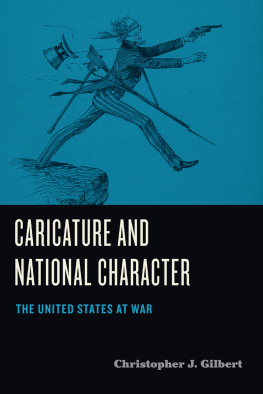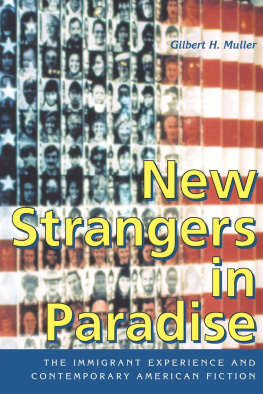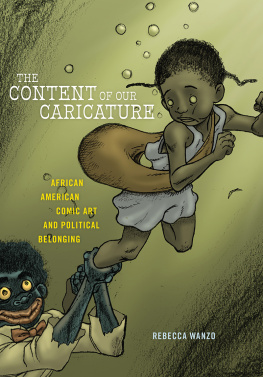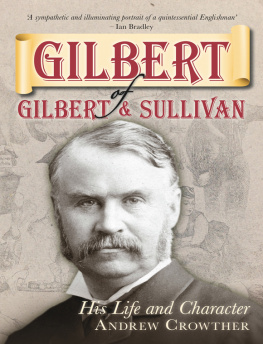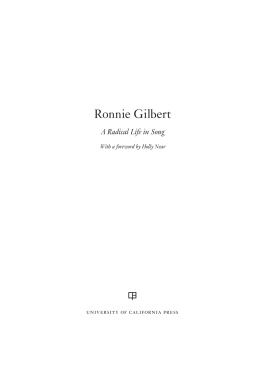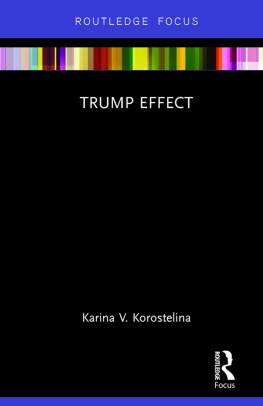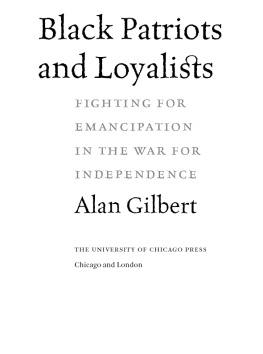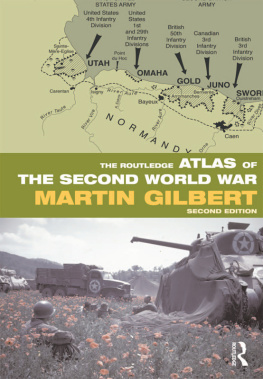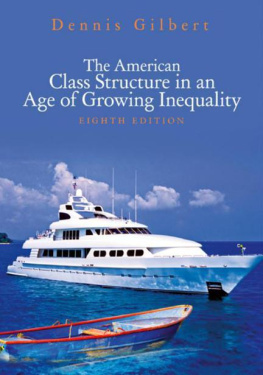
CARICATURE AND NATIONAL CHARACTER

Edited by
Judith Yaross Lee, Ohio University
Tracy Wuster, The University of Texas at Austin
Advisory Board
Darryl Dickson-Carr, Southern Methodist University
Joanne Gilbert, Alma College
Rebecca Krefting, Skidmore College
Bruce Michelson, University of Illinois at Urbana-Champaign
Nicholas Sammond, University of Toronto
The Humor in America series considers humor as an expressive mode reflecting key concerns of people in specific times and places. With interdisciplinary research, historical and transnational approaches, and comparative scholarship that carefully examines contexts such as race, gender, class, sexuality, region, and media environments, books in the series explore how comic expression both responds to and shapes American culture.
CARICATURE AND NATIONAL CHARACTER
The United States at War
Christopher J. Gilbert
The Pennsylvania State University Press
University Park, Pennsylvania
Library of Congress Cataloging-in-Publication Data
Names: Gilbert, Christopher J., author.
Title: Caricature and national character : the United States at war / Christopher J. Gilbert.
Other titles: Humor in America.
Description: University Park, Pennsylvania : The Pennsylvania State University Press, [2021] | Series: Humor in America | Includes bibliographical references and index.
Summary: Examines wartime political cartoonswith particular emphasis on the works of James Montgomery Flagg, Dr. Seuss, Ollie Harrington, and Ann Telnaesto examine how, when, and why graphic caricatures serve to illuminate the US national characterProvided by publisher.
Identifiers: LCCN 2021010039 | ISBN 9780271089768 (hardback)
Subjects: LCSH: Flagg, James Montgomery, 18771960Criticism and interpretation. | Seuss, Dr.Criticism and interpretation. | Harrington, Oliver W. (Oliver Wendell), 19121995Criticism and interpretation. | Telnaes, Ann, 1960Criticism and interpretation. | National characteristics, AmericanCaricatures and cartoons. | Art and war. | United StatesHistoryCaricatures and cartoons.
Classification: LCC NC1420 .G55 2021 | DDC 741.6092dc23
LC record available at https://lccn.loc.gov/2021010039
Copyright 2021 Christopher J. Gilbert
All rights reserved
Printed in the United States of America
Published by The Pennsylvania State University Press,
University Park, PA 168021003
The Pennsylvania State University Press is a member of the Association of University Presses.
It is the policy of The Pennsylvania State University Press to use acid-free paper. Publications on uncoated stock satisfy the minimum requirements of American National Standard for Information SciencesPermanence of Paper for Printed Library Material, ANSI Z 39.481992.
All wars are follies.
BENJAMIN FRANKLIN , letter to Polly Stevenson Hewson (January 27, 1783)
folly given all this
seeing
folly seeing all this
this
what is the word
this this
this this here
all this this here
folly given all this
seeing
folly seeing all this this here
for to
what is the word
see
SAMUEL BECKETT , what is the word, translation of Comment dire (1988)
At the very least, caricatures are responsible for the possibility that they lead willing viewers into accepting transgressions that transform them into societys spectral beings. Caricature has the force to set societies on the sanctimonious path that pits Our Principles against Their Follies, Our Truths against Their Lies, without giving thought as to which introduces the greatest interruptions to the social fabric. Under conditions like these, more than one person, group, or nation gets hurt.
MARTHA BANTA , Barbaric Intercourse: Caricature and the Culture of Conduct, 18411936 (2002)
Contents
I remember reading somewhere about the writing life as a solitary one in which no writer is ever alone. There are, quite simply, too many interactions with friends, scholars, and mentors, too many conversations big and small, and too many influences on my writing of this book to even begin attaching names to so many tokens of gratitude. I wrote some early ideas for this book while my infant son nappedsometimes on my chest as I typed away on my laptop. I wrote some of this book while riding my bike, pausing on this or that roadside to text message ideas to myself, scribble notes in a small journal stuffed in a plastic bag, or simply think. I wrote some of this book while writing about what I thought then were somewhat unrelated topics, sometimes with co-authors, and always with the benefit of a certain generosity of scholarship and spirit that seems to permeate my fields of study and circles of friends. Quite simply, I wrote this book in various states of solitude, in several iterations, and yet never by myself.
What springs to mind along with the vast catalog of former professors, grad school classmates, present colleagues, mentors past and present, and lifelong friends who contributed in one way or another to my thinking is the feeling that comes with calling any work of criticism and/or creativity complete: what E. E. Cummings once called a sense of strenuous briefness. It is a feeling of arrival and departure in unison. It is a feeling of dawn dancing with twilight. This book was borne of strange and solemn and sublime and ridiculous imbrications. It was borne of my deep and longstanding interest in how war typifies the Human Comedy pushed to the end of its line, and then again how human beings have since time immemorial charged in and out of the darkness of wartimes with laughter on their breath. I do not know warfare from personal experience. But I do know of it from those who have shared with me how it is that the best of us can be carried away by the worst angels of our natures. I do know that my family motto has always been driven by the notion that there is a sort of comicality at the root of survival, the basis of which is a sense of humor. Cummings wrote of the doggedness that emerges from brevity, fromin his wordsall the solongs and ashes. He wrote of this doggedness as someone who saw firsthand the hardships and follies that so often follow when we humans let loose the dogs of war. And yet he wrote of a humanity that found in laughter the best of ways to live and die together.
And so, in brief, I wish to acknowledge mentors and friends like John Louis Lucaites, Stephen Olbrys Gencarella, Jonathan Rossing, Casey Ryan Kelly, Kristen Hoerl, Claire Sisco King, Phaedra Pezzullo, Ted Striphas, Robert Terrill, Robert Ivie, Kurt Zemlicka, Mark Nagle, Will Schiebel, Chris Beyers, Mike Land, and many others who have been supportive in different ways and instrumental in keeping me intellectually sharp. I wish to thank Judith Yaross Lee especially for supporting my work, and Tracy Wuster for providing advice and encouragement along the way. I wish to recognize Ryan Peterson for his gracious editorial guidance. I would be remiss, too, if I did not express my gratitude for the institutional support (i.e., faculty development grants, funding to offset fees associated with reproduction rights) and overall freedom to be the scholar and teacher I am that has been part and parcel of my experience in the liberal arts tradition and in the humanities. Sincere thanks as well to Ann Telnaes (and Sara Thaves), Dr. Helma Harrington (in lieu of Ollie Harrington), and David Rowe for granting me permission to include their wonderful works of comic art in my book. Putting this book together has been strenuous, to be sure, but la Cummings, it has reminded me just how much i smilingly glide.
Next page
